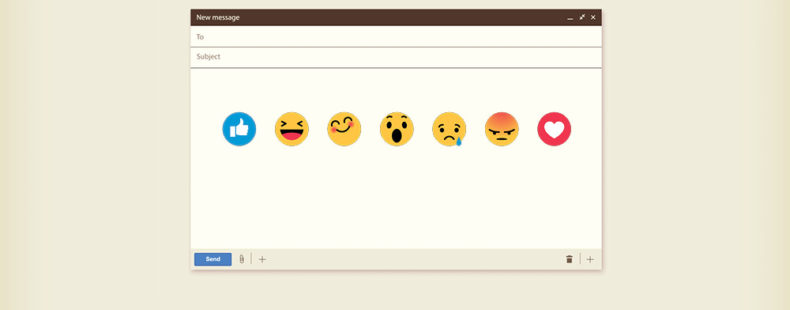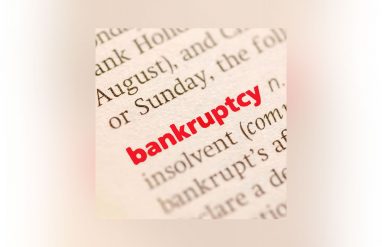A few decades ago, if you told someone that people would soon be sending one another electronic messages full of cartoon smiley faces, they would have looked at you like, well, 🙃.
But, the future is now, and we do indeed send each other emails, texts, and tweets all day long that contain hearts and sparkles, crying faces and laughing faces, and all sorts of creatures, great 🦑 and small🐛.
Not everyone is always on board with emoji, however. When it comes to sending emails that are serious or professional in nature, some worry that using emoji makes them look childish. Others simply don’t like them.
So, what’s an emoji user to do? 🤷🏽
When did we start using emoji?
Emoji were in part inspired by emoticons. An emoticon is “a digital icon or sequence of keyboard symbols that serve to represent a facial expression, such as :-) for a smiling face” or <3 for a heart. The word is a portmanteau of emotion and icon.
Emoticons are credited to Scott Fahlman, a professor at Carnegie Mellon University, in 1982. It became apparent that he and his colleagues needed a way to convey when they were joking or being sarcastic on a text-only university online message board. He proposed using the smiley face :-) to indicate jokes and a sad face : -( to indicate seriousness, much like many of us still do today.
The concept caught on as the internet became more popular and more mainstream. Soon, there were emoticons to express winking, crying, and even kissing. Then, in the late 1990s, Japanese cell phone carriers SoftBank (in 1997, ultimately the basis of Apple’s leading emoji) and NTT Docomo (who released an influential set in 1999) changed the game by introducing some of the first emoji. Emoji are “small digital pictures or pictorial symbols that represent a thing, feeling, concept, etc.” The word literally means “picture letter”or “picture character” in Japanese. At this time, screen space was limited, and so emoji aided communication by expressing big concepts in a small space.
Emoji went mainstream outside Japan after 2010, when they were standardized by Unicode, an organization that provides a universal character set for computers. Today, the ever-growing family of emoji can be found on keyboards and screens all across the globe—with a 2016 report finding over 90% of people online using them.
So, should we use emoji at work?
As of March 2019, there are 3,019 emoji in the Unicode Standard, and some of the most popular ones are Face with Tears of Joy 😂, Red Heart ❤️, Smiling Face with Heart Eyes 😍, Thinking Face 🤔, and Fire 🔥.
By 2017, over five billion—yes, billion—emoji were being sent on Facebook Messenger every day, and around half of all comments on Instagram include an emoji. 🤯 So, it only makes sense that emoji would start to creep into our emails as well, right?
While the use of emojis in personal emails generally isn’t the subject of controversy, people have strong opinions about whether or not it’s OK to use them in professional emails.
Some people are 100 percent anti-emoji in work emails:
I will not debase myself and use emojis in work email I refuse
— 🆗 steve (@steve_jorbz) December 12, 2018
Others reserve their irritation for specific types of emoji:
Nothing irks me more than when someone uses a wink face emoji in a work email. It’s honestly soooo creepy. 🤢🤮
— Christine Dean (@Cdeannnnn) January 16, 2019
But, a lot of people don’t seem to have a problem punctuating their emails with smiles, frowns, winks, laugh-cries, and every other available emoji.
Should you use emojis in a work email? What do you think?🤔
Answer below and sign up for the British Council's new online course, Writing Better Emails, to find out what the experts say about it! https://t.co/Kq0ywi0IXT @LearnEnglish_BC #FLbetteremail
— FutureLearn (@FutureLearn) January 24, 2018
The main reason why some people are against emoji in work contexts is because they think using them seems unprofessional and immature. In fact, a 2017 study published in Psychological and Personality Science found that people who use smiley faces in professional emails may be perceived as less competent.
However, emoji are already a major part of the work landscape. A 2014 survey found that 76 percent of Americans use emoji in professional communication. Gmail and Outlook both have emoji keyboards. Messaging services like Slack, used by many companies, encourage users to use a variety of emoji, including some custom ones. In early 2019, a Wall Street Journal op-ed even advocated for the occasional use of emoji in professional emails, mostly because emails can be misunderstood and adding an emoji can help to clarify the writer’s intent.
How to use emoji thoughtfully
The trick with using emoji at work seems to be knowing when to use it. Alison Green, the workplace expert behind the popular website Ask A Manager, says emoji are fine in moderation, but we should consider the type of message we’re writing, who we are sending it to, and our company’s overall culture.
A close colleague, for instance, could casually show thanks and appreciation in a Slack chat or quick email with Smiling Face with Smiling Eyes ☺️ or Folded Hands 🙏. But a boss making an official announcement about company-wide layoffs with Loudly Crying Face 😭? Not so appropriate.
We should also be mindful of clarity. One of the virtues of emoji is that they help convey tone and emotion, so often lost in electronic communication, but overloading emails with hearts and smileys can be distracting and drown out what we are trying to say. Be careful, too, about which emoji is sent. Many emoji are straightforward, like Hedgehog 🦔; it’s a hedgehog. But, others can easily be misinterpreted, such as Grimacing Face 😬, whose applications widely vary. Then there are emoji, such as Peach 🍑, who’ve taken on slang lives of their own that we’re pretty sure you don’t want to send to your coworkers.
Emoji are a part of everyday communication for most people, and that includes at work. Nonetheless, it’s always wise for us to be thoughtful about how we communicate.
And, if in doubt, check out Dictionary.com’s guide to emoji to make sure your workplace emoji use is 👍.














